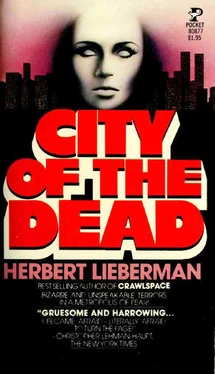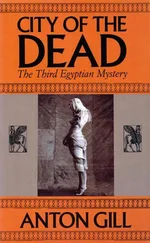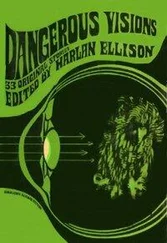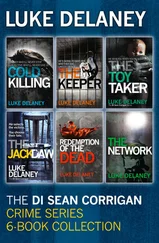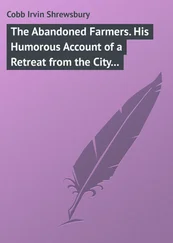“You boys got all this stuff tagged?” Konig asks.
“Tagged and pinpointed for location,” replies the beefy young cop.
“It all come from the same general area?”
“From out there.” One of the other cops points to a place where the men in hip waders and lantern helmets stumble through the shallow water. “Some of it’s uncovered at low tide.”
“Trouble is the goddamned tide’s comin’ in now,” Flynn says. “We’re gonna lose half the stuff.”
“You probably lost half already. What time’s high tide?” Konig asks.
“About eight p.m.”
“Be a good idea to get the place cleaned out before too much more of it gets washed away.”
“We’re doin’ our best, Chief,” says the Irish cop. “We’ve had the place cordoned off and a dozen guys diggin’ down there since this mornin’. I figure we got it pretty well cleaned now. There ain’t too much more to dig.”
“There’s more,” Konig remarks casually, his eyes scanning the bloody parcels. “You boys hit a graveyard.”
Flynn gazes at him questioningly.
“Number one,” Konig continues, more to himself than to those assembled, “those remains don’t all come from the same body. Offhand, I’d say you’ve got parts from two or three different bodies there. Number two, all these parts have been buried about the same length of time.” He prods a splintered edge of femur protruding from one of the bags. “The putrefaction in this thigh, for instance, is about the same as in that thoracic section. It’s a young leg, too, judging from the degree of calcification. I’d say it belonged to a young male, early twenties—”
“What about them balls, Doc?” one of the young cops joshes.
“Pretty well hung, ay, Whitey?” More laughter and rude joking.
“And number three,” Konig goes on mechanically, computerlike, gathering data, collating, filing in his head, scarcely hearing any of the raucous, irreverent banter of the weary men around him. “The person who did the dismembering had some sophistication—not a great deal, but he knew his anatomy and where to cut. Used a hacksaw. You can see the teeth marks in that femur—”
“We got the saw too,” says Flynn.
Jarred for the first time out of his quiet ruminations, Konig glances up. “Where?”
Flynn smirks broadly. “Come on with me.”
Together they walk back up through the cordons and the milling crowds, drawn there by the excitement of television crews working under bright lights. They trudge down along the shoreline, past the bustling Heliport, like two old friends taking an after-dinner stroll along the water. From where they are they can see an endless stream of car lights flowing over the Brooklyn Bridge, and traffic pouring toward the Battery Tunnel. Far out over the water, the lights from Brooklyn Heights all the way down to the Erie Basin are flickering magically.
“Where the hell you taking me now?” Konig snarls, pain shooting down his leg.
“Right up ahead, where you see the lights.”
They trudge along the shoreline to a drab tiny shack squatting like a toadstool at the edge of the water. A dim orange light glows from within, and at the front several patrolmen hover at the doorway, smoking and chatting quietly.
As Flynn and the Chief appear through the thick velvet dusk, the cigarettes are quickly extinguished and the men step aside from the door.
“How the hell’d you find this place?” Konig stoops beneath the strangely shallow lintel of the doorway and enters.
“Rover, the little dog who found the hand.” Flynn’s smile is full of self-congratulation. “After he had a whiff of that hand, there was no stoppin’ him. Just turned him loose at the river and he led us right here to the front door.”
Several detectives prowl about in the dim light. The police photographers and lab technicians still swarm about the place like ants.
It is a low, vile turn-of-the-century shanty they’ve come to, full of the smell of mildew and rutting cats. One room with a rotting wood floor, the sort of place used for storage by fishermen in more tranquil times but in modern times fallen quickly into disuse—a haven for derelicts and squatters. Discarded beer cans and Thunderbird wine bottles are strewn all about. Two lean, mangy cats mew and wind their way through the fetid rubbish on the floor. There are several rusty, broken beds covered with thin, sheetless, urine-sodden pallets, tufts of mattress filling spewing out of gaping fissures. Old, yellowing copies of the Daily News have been stuffed into the punched-out windows for protection against wind and rain. Several open cans of beans and corn, half empty, lie forlornly on the floor, festooned with a green, fuzzy, faintly luminescent mold.
“Fragrant, ay,” says one of the cops.
“Like a shithouse,” remarks Flynn, a handkerchief pressed to his nose.
“Probably was.” Konig glowers into the rank shadows. “No toilet. No running water.”
“You got the biggest toilet in the world running right outside your front door.” Detective Morello, emerging from a shadowy corner, waves in the direction of the East River outside. “Hi, Chief.”
“They haul you down here, too, Morello?”
“He ain’t goin’ home to the wife and kiddies tonight,” Flynn jeers. “Not while I gotta work.”
With the tip of his shoe Konig pokes almost coyly at some rubbish on the ground. “Who owns the place?”
“We’re checking the Bureau of Records for the deed now,” Morello says.
“Whoever owned it”—Flynn waves his arm through a curtain of spider webs—“wasn’t a very good housekeeper.”
“My guess is it belongs to the City.” Morello scribbles elaborately into a pad. “Anyway, it’s a derelict. Looks like squatters and winos holed up here for the winter. Pulled out at the first crack of warm weather.”
Konig peers gloomily about. “How do you figure this is where those pretty packages down on the beach came from?”
Flynn smirks and gestures in the direction of a dark corner of the shack. “Come on over here.”
Reaching there, Konig peers down the beam of Flynn’s flashlight into an old porcelain tub plucked out of the junk heap of some abandoned and demolished building and borne here to serve no discernible purpose other than possibly ornamentation. Its sides are splashed liberally with dried blood. Within the tub itself there are shards of bone, tufts of hair, clots of gore.
“The workbench,” Flynn says.
“The tools are over here,” Morello calls from the other side of the shack.
They walk back to a small, rickety bridge table covered with a variety of junk—odds and ends, cheap brummagem—harmless enough, but among it all there are an ax, an adz, chisels, a tire iron.
“There’s your hacksaw.” Flynn points proudly down at a rusty old saw, the blade of which is crusted with dried blood. The Chief’s eyes quickly take in the size and configuration of the teeth, matching them in his mind with the imprint of those he saw shortly before on the bones beside the river. “Got any prints?”
“I don’t know what we got,” Morello says. “As soon as we get all this stuff back to the lab, we’ll see what we got.”
“Any leads?”
“Couple of people in the neighborhood claim they seen a Salvation Army officer goin’ in and out of here from time to time.”
“Salvation Army officer?” Konig gapes back at Flynn. The detective shrugs wearily. “That’s what they claim.” Outside once again on the beach, a television crew is making its noisy, conspicuous way toward the shack. The thudding, concussive beat of helicopter rotors stirs the air overhead. Down on the river, the men in hip waders and lantern helmets slog in from the muddy water, where the tide has become too high and too swift to work with any safety. Konig and Flynn are standing again in the large circle of white light where men busy at a variety of tasks bustle about amid the growing accumulation of grisly plastic bags.
Читать дальше
